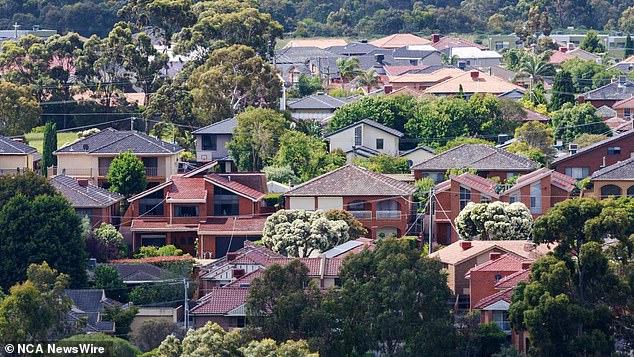Proptrack Housing Affordability Index: Australian cities which are least affordable to buy a house
Proptrack Housing Affordability Index: Australian cities least affordable to buy a home
Housing affordability is at its worst level in three decades, with the average Australian household being able to afford just 13 percent of the market.
A new Proptrack report paints a grim picture for the Great Australian Dream, showing that sharp rises in mortgage rates and skyrocketing house prices are discouraging thousands of people from buying a home.
The report shows that households with median incomes of about $105,000 can afford 13 percent of all homes sold nationwide in the past year — the lowest level since records began in 1995; and low-income households earning $64,000 a year can afford just three percent of homes.
Even those who can afford to buy a home struggle after the contract is signed, as paying off a mortgage is “almost as difficult as it ever was” — just below its 1989 peak.
Meanwhile, middle-income households must spend a third of their income to meet their mortgage payments on a middle-priced home.
The affordability situation is grim in NSW, where a normal-income household can afford just seven percent of homes sold in the state (pictured, a Sydney home being auctioned)
The situation is even worse in NSW, where a normal-income household can afford just seven per cent of homes sold in the state. Victoria and Tasmania are the hardest places to afford a house, while Queensland and WA remain the most affordable.
House prices rose for the eighth month in a row in August, so that there are now ‘much fewer homes’ for which mortgage payments are affordable than in previous years.
Angus Moore, senior economist and Proptrack co-author, said the situation is “particularly challenging” for first-home buyers and lower-income households because the average household will have to save 20 percent of their income for 5.5 years to save 20 percent of his income. cent deposit on a house with an average price.
Young people – the age group of 25 to 34 – can afford less than 30 percent of the housing.

Victoria is, along with NSW and Tasmania, the least affordable places in Australia to buy a home (pictured, a suburb of Melbourne)
“Mortgage rates have risen extremely fast from record lows in 2020 and 2021, following the RBA rate hikes that began in May 2022. This has led to the sharpest rise in mortgage rates since the mid-1980s and has increased borrowing capacity by as much as 30 percent for new borrowers,” said Moore.
At the same time, existing borrowers, who make up about a third of Australian households, have seen sharp increases in mortgage repayments. A typical recent borrower is now facing repayments as much as 50 percent higher than at the beginning of 2022.
Household incomes have risen since the pandemic and improved labor market conditions have put more people into work and boosted wage growth. However, this has proved insufficient to offset higher house prices and, crucially, the rise in mortgage interest rates.’
